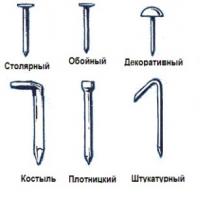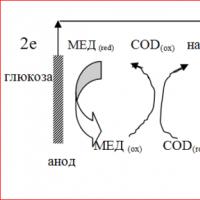Calculation table for round and rectangular air ducts. Calculator for calculating supply ventilation standards. Calculation of duct area
On this page, using a special calculator, you can make calculations based on the parameters you specify: type, dimensions, steel thickness. Enter the height, width and length or diameter of the duct (in millimeters), metal thickness (in millimeters).
The calculator will calculate the approximate price of the product with the specified parameters.
Calculation of the cost of rectangular air ducts
results
Calculation of the cost of round air ducts
results
Pricing
The VentSystems company pursues a flexible pricing policy aimed at maintaining the minimum selling price of products for customers. Several factors contribute to this. Firstly, the company sells goods of its own production - all goods are manufactured in its own workshops. Consequently, there are no intermediaries and additional money markups. Secondly, all work is carried out on modern high-performance equipment, which can produce large volumes within a short period. Such technologies make the production process fast and economical, since even the largest orders require little time to complete.
An important factor for pricing is the supply of raw materials. The material for air ducts and fittings is high-quality sheet steel. It is purchased and delivered to the VentSystems plant regularly and in large volumes from the country's leading suppliers. Long-term contracts with sheet steel manufacturers, long-term cooperation and optimal delivery conditions make it possible to significantly reduce costs, which has a positive effect on the cost of production.
The company's management has built and optimized the process of production and sale of goods in such a way as to eliminate reasons and sources that could unnecessarily increase the cost of products. All functions and tasks are solved using our own resources without involving additional parties. This makes it possible to confidently maintain a balance between the quality of the proposed ventilation products and their affordable cost. Research shows that there are many offers on the market for similar products with prices significantly higher than those presented here. The opposite problem is cheap air ducts of obviously dubious quality. The VentSystems company is far from both extremes and offers reliable products that meet all standards at reasonable prices.
Special conditions
For all customers it is possible to discuss individual terms of cooperation. Regular customers have special discounts and offers. In addition, for individual orders, special conditions regarding the form and terms of payment may apply. Large orders can be paid in installments. All organizational issues can be discussed directly with the management of the enterprise. The VentSystems enterprise is always ready for any constructive proposals and is interested in fruitful cooperation with all contractors.
The company's management invites representatives of organizations and interested parties to visit the production complex, inspect the plant's workshops, get acquainted with product samples and negotiate with management. The office and production complex are located in the village of Yam, Domodedovo district, Moscow region.
An online calculator for calculating hoods for certain rooms, depending on the purpose, will allow you to select the right fan based on performance and air exchange parameters. Calculation of m3/h fan performance depending on the air exchange rate in an apartment, office or other domestic premises of different directions. Correct calculation of ventilation is based on making the right choice a fan suitable for such parameters as performance in terms of the volume of air pumped and measured in cubic meters per hour. The main indicator is the calculation of the performance of the air duct and the frequency of air exchange cycles. The air exchange rate shows how many times the air in the room is completely replaced within an hour. The table below provides examples and air exchange rates.
Indoor air exchange rate calculator
What determines the frequency of air exchange?
At certain values, air exchange is calculated according to the standard multiplicity. Regardless of the type of room, the formula for calculating the air exchange rate will be the same:
L = V room ⋅ K p (m 3 / h),
where V room is the volume of the room, m 3;
K p - standard air exchange rate, 1/hour.
The volume of the room must be known, while the number of multiplicities is regulated by standards. These include construction standards SNiP 2.08.01-89, sanitary and hygienic standards and others.
Aerodynamic calculations of mechanical ventilation and air conditioning systems are carried out to determine the diameters or dimensions of rectangular sections of air ducts or channels, as well as to determine the pressure loss when air moves in the channel and select the appropriate fan.
One of the important factors when designing ventilation systems is the speed of air movement in the duct. At high air speeds, noise is created from friction against the walls of the air duct and turbulence at turns and bends, and the resistance of the air duct system will also increase, which leads to the need to install a fan of higher performance, and subsequently to an increase in capital and operating costs.
- 1.5...2.0 m/s - in the distribution channel with supply or exhaust ventilation grilles and deflectors;
- 4...5 m/s - for side branches of supply and exhaust ventilation;
- 6 m/s - for main channels of supply and exhaust ventilation;
- 8...12 m/s - for main canals of industrial enterprises.
For the calculation, an axonometric diagram of the supply and exhaust ventilation systems is constructed. The main direction of the air ducts in the diagram is divided into sections - segments of the same length and with a constant air flow. Then the sections are numbered and all values are plotted on the diagram. The total air flow is formed by sequentially summing the air flow through the branches joining the main direction.
Calculation of the cross-sectional area of the duct
The cross-sectional area of the air duct for each section is calculated using the following formula:
where L is air flow (m³/h);
V – air flow speed (m/s);
Then calculate the preliminary diameter of the air duct in the area
D=1000∙√(4∙S/"π") mm, and rounded to the nearest standard size. The dimensions of the air ducts must be taken strictly in accordance with the values given in the reference manual.
If it is necessary to use rectangular air ducts, the dimensions of the sides are also selected according to the approximate cross-section, i.e. so that a×b ≈ S in accordance with the table of standard sizes, taking into account that the aspect ratio, as a rule, should not exceed 1:3. The minimum rectangular section is 100×150 mm, the maximum is 2000×2000.
The choice of air ducts of round or rectangular cross-section and the material from which they will be made is made in accordance with the technical conditions of the facility.
Rectangular ducts are smaller in size and can be used in rooms with limited space for placement of ventilation ducts. Air ducts of round cross-section reduce air resistance, and, consequently, the noise of the structure, eliminate air loss and are more convenient for installation.
For your convenience, we have made this calculation for the most commonly used sizes and sections of air ducts. Address for applications for selection of equipment by ready-made projects and development of Technical Specifications for the design of air conditioning and ventilation systems:
The cross-section of a rectangular and/or round air duct is calculated using two known parameters: air exchange by room and flow rate air.
Air exchange throughout the room can be replaced by fan performance. The performance of the supply or exhaust fans is indicated by the manufacturer in the product data sheet. When designing or pre-design development, air exchange is calculated based on the multiplicity. Multiplicity (the number of times the full volume of air in a room is replaced in 1 hour) is a coefficient from regulatory documentation.
The duct flow velocity must be measured if it is . And if the project is under development, then the flow rate in the air duct is set independently. The flow speed in the air duct should not exceed 10 m/s.
Below are formulas and a calculator based on them, with which you can calculate the cross-section of rectangular and round air ducts.
Formula for calculating the circular cross-section (diameter) of an air duct

Formula for calculating the rectangular cross-section of an air duct

Calculator for calculating the cross-sections of rectangular and round air ducts using air exchange and flow rate
Enter parameters in the fields air exchange and required flow rate in the air duct
To transmit supply or exhaust air from ventilation units in civil or industrial buildings, air ducts of various configurations, shapes and sizes are used. Often they have to be laid through existing premises in the most unexpected places and cluttered with equipment. For such cases, the correctly calculated cross-section of the air duct and its diameter play a vital role.
Factors influencing the size of air ducts
At facilities being designed or newly built, successfully laying pipelines for ventilation systems is not a big problem - it is enough to coordinate the location of the systems in relation to workplaces, equipment and other utility networks. In existing industrial buildings this is much more difficult to do due to limited space.

This and several other factors influence the calculation of the duct diameter:
- One of the main factors is the flow rate of supply or exhaust air per unit of time (m 3 / h) that a given channel must pass through.
- The throughput also depends on the air speed (m/s). It cannot be too small, otherwise, according to the calculation, the size of the air duct will be very large, which is not economically feasible. Too high a speed can cause vibrations, increased noise levels and increased power of the ventilation unit. It is recommended to take different speeds for different sections of the supply system; its value ranges from 1.5 to 8 m/s.
- The material of the duct matters. This is usually galvanized steel, but other materials are also used: different kinds plastic, stainless or black steel. The latter has the highest surface roughness, the flow resistance will be higher, and the channel size will have to be larger. The diameter value should be selected in accordance with the regulatory documentation.
Table 1 shows the normal dimensions of air ducts and the thickness of the metal for their manufacture.
Table 1

Note: Table 1 does not completely reflect the normal, but only the most common channel sizes.
Air ducts are produced not only in round, but also in rectangular and oval shapes. Their dimensions are taken through the value of the equivalent diameter. Also, new methods for making channels make it possible to use thinner metal, while increasing the speed in them without the risk of causing vibration and noise. This applies to spiral-wound air ducts; they have high density and rigidity.
Return to contents
Calculation of air duct dimensions
First you need to decide on the amount of supply or exhaust air that needs to be delivered through the duct to the room. When this value is known, the cross-sectional area (m2) is calculated using the formula:

In this formula:
- ϑ – air speed in the channel, m/s;
- L – air flow, m 3 /h;
- S – cross-sectional area of the channel, m2;
In order to connect the units of time (seconds and hours), the number 3600 is included in the calculation.
The diameter of a circular duct in meters can be calculated based on its cross-sectional area using the formula:
S = π D 2 / 4, D 2 = 4S / π, where D is the channel diameter, m.

The procedure for calculating the size of the air duct is as follows:
- Knowing the air flow in a given area, the speed of its movement is determined depending on the purpose of the channel. As an example, we can take L = 10,000 m 3 /h and a speed of 8 m/s, since the system branch is a main line.
- Calculate the cross-sectional area: 10,000 / 3600 x 8 = 0.347 m2, the diameter will be 0.665 m.
- Normally, the closest of two sizes is taken, usually the one that is larger is taken. Next to 665 mm there are diameters 630 mm and 710 mm, you should take 710 mm.
- In reverse order, the actual speed of the air mixture in the air duct is calculated to further determine the fan power. In this case, the cross section will be: (3.14 x 0.71 2 / 4) = 0.4 m2, and the real speed will be 10,000 / 3600 x 0.4 = 6.95 m/s.
- If it is necessary to lay a rectangular channel, its dimensions are selected according to the calculated cross-sectional area equivalent to a round one. That is, the width and height of the pipeline are calculated so that the area is 0.347 m2 in this case. This can be a 700 mm x 500 mm or 650 mm x 550 mm option. Such air ducts are installed in cramped conditions, when the space for installation is limited by technological equipment or other utility networks.
 Are there mites in Pitsunda? Ticks in Abkhazia. Pitsunda pine grove
Are there mites in Pitsunda? Ticks in Abkhazia. Pitsunda pine grove Red viburnum (Viburnum opulus L
Red viburnum (Viburnum opulus L Nail Making Business How to Make Copper Nails
Nail Making Business How to Make Copper Nails Stone brazier: material features and manufacturing options
Stone brazier: material features and manufacturing options Blackroot medicinal cultivation
Blackroot medicinal cultivation Fuel cells: a glimpse into the future
Fuel cells: a glimpse into the future Houses with a hipped roof projects
Houses with a hipped roof projects